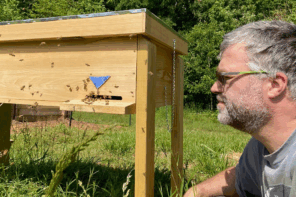Alyssa Piccolomini
State Entomologist

Montana is a vast and diverse state of mountains, river valleys, forests, plains, badlands and caverns and our beekeepers are unique enough to fill nearly every niche of the state. Currently, the state has 584 registered beekeepers, 94 of them are commercial operations and the remainder are comprised of side-liner and hobbyists, with nearly 260,000 colonies across 6,790 locations. As of July 2019, all beekeepers, regardless of number of colonies kept, are required to register their hives with the Department and the number of new beekeepers applying for registration certificates increases every day. The state is also unique in that it is one of the few states that still has a radius law associated with its locations. Although not all registration categories have a radius barrier, commercial locations of differing operations may not be placed within three miles of one another. The application of the radius law allows for spacing between varying operations which is believed to aid in minimizing pest and disease dispersal amongst colonies.
The Apiary Program at the Montana Department of Agriculture employs one full-time State Entomologist that serves as the “bee inspector” for both honey bees and alfalfa leafcutting bees and employs one seasonal honey bee inspector. The State Entomologist collaborates frequently with the Montana State Beekeeper’s Association and various hobbyist beekeeping groups distributed throughout the state, as well as participates in the USDA-APHIS National Honey Bee Survey and often, works with university researchers.
Montana typically ranks in the top five honey producing states and sees strong honey flows primarily in July-August, especially when large acres of sweet clover bloom occur throughout the state. Nearly all commercial beekeepers in Montana migrate from Montana to California in October-November to fill almond pollination contracts in the Winter months and some move northward from there and pollinate a variety of stone crops in Oregon and Washington. Montana is known for producing wheat but also grows canola, sainfoin, alfalfa, barley and a variety of pulse crops.










